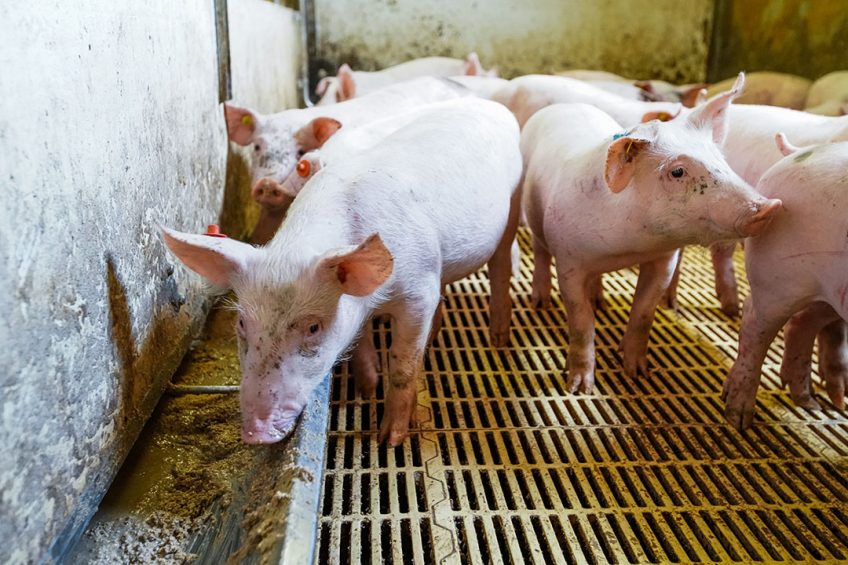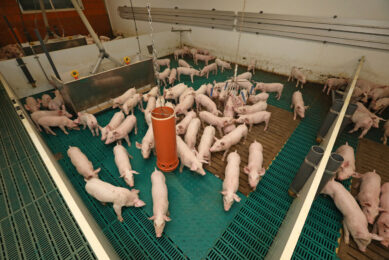ESPHM review, day 2: Focus on swine nutrition

How can innovation in pig nutrition be helpful for veterinary medicine? That question was key at the 2nd day of online keynote lectures of the digital edition of the European Symposium of Porcine Health Management (ESPHM). On the menu: smart precision feeding and controlled fermentation.
The topic of smart precision feeding was introduced in a very interesting lecture by Dr Candido Pomar, research scientist at Agriculture and Agri-Food Canada, and also attached to several universities around the world.
How to improve pig nutrition efficiency?
He wondered how nutrition efficiency could be improved. To answer that question, he zoomed in on the animals’ requirements. However, focusing on the average pig is not sufficient, he said, as “one-size-fits-all” does not really apply to pig production. He said, “We have a problem: we do not have 1 animal. We have many animals. You are having only a few pigs that are going to be happy.”
That is where precision feeding can make a difference, Dr Pomar said: the right amount of feed with the right composition to be provided at the right time to each animal of the herd. Three components are needed to achieve that, he said, including:
- Measuring devices (for scanning body weight and feed measurements);
- Numerical methods (estimating real-time nutritional requirements); and
- Control devices (like automatic feeders).
Results of feed validation trials
Dr Pomar showed results of 2 validation trials, where a reduction of protein intake (-16% in both cases), lysine intake (-27% and -26%), nitrogen excretion (-22% and -30%) and feeding costs (-8% and -10%) were observed. Summarising he added that individual precision feeding would allow a reduction of 5-10% in feeding costs, a reduction of 2-3% feed fabrication costs and over 40% of the excretion of nitrogen, phosphorus and other polluting constituents.
Advantages include a reduction of labour necessary and a benefit for the environment. Whilst he was speaking to a veterinary audience, he added: “The easy application of dietary treatments facilitates the early detection of diseases by monitoring individual feed intake patterns and other animal parameters. In addition, it reduces antibiotic use by precise application of individual veterinary treatments, resulting in improved herd performance and lower veterinary cost.”
Smart livestock farming: the next revolution?
Dr Pomar closed off saying, “I think we will move toward smart livestock farming.” Describing that as “the combination of precision agriculture and Big Data analysis techniques, he predicted it has the potential to be the next revolution in agriculture.
Controlled fermentation researched in Germany
An entirely yet promising approach in the field of animal nutrition was then described by Prof Dr Josef Kamphues of the University of Veterinary Medicine in Hanover, Germany. The method of controlled fermentation has been used on a fairly large scale in North Western Europe over the last decade. Prof Kamphues and his team presented outcomes of a detailed study and explained various modes of action.
He briefly explained the difference between “simple fermentation” of feedstuffs and “controlled fermentation” of feedstuffs. Amongst other things, he said that the controlled method works with a starter culture, 2 fermenters, and revolves around a high lactic acid formation and fast pH reduction. Applying that method is beneficial for process safety, he said.
Trials with lactic acid bacteria
Trials were performed with the product Schaumalac Feed Protect XP G, he said, which includes Lactobacillus plantarum, Lactococcus lactis and Pediococcus pentosaceus. The latter is highly active in phytase production, Prof Kamphues said.
In a first trial with 2×5 pigs of roughly 20kg, a totally fermented meal was based on mainly rye (over 48%), extracted rapeseed meal, wheat and barley. In terms of mineral supplements, no phytase was added. Nevertheless, apparent total tract digestibility was found to go up for dry matter, organic substances, crude protein and phosphorus.

Fine particles in diets: gastric ulcers
Prof Kamphues noted that due to fermentation, the share of very fine particles in the diet had gone up, which can lead to gastric ulcers. That is why a 2nd trial consisted of 60% fermented rye and rapeseed and 40% of non-fermented roller mill ground cereals.
Again, 2×5 pigs of roughly 20kg were put to the test. Also in this run, the apparent total tract digestibility for phosphorus went up compared to the control group, and the same applied to crude protein. Plus: no gastric ulcers were found.
Hygienising potential of fermentation
Prof Kamphues pointed to a “hygienising potential” of the fermentation, which would suppress levels of Escherichia coli, Clostridium perfringens and Salmonella Typhimurium. He showed slides in which the microbiome of the small intestine of pigs was analysed, having been fed a fermented rye-based diet. In case of the option of fermented feed and rolled cereals, levels of lactobacillaceae went up to +90% he showed, whereas the microbiome of animals having had non-fermented feed was a mixture of many bacteria types.

He concluded: “With controlled fermentation, the diet acts as a probiotic; with secondary adding of rolled rye, the diet acts as a prebiotic.” He added that fermentation did not require further acidifying agents, and the impact of nitrogen and phosphorus for the environment would be lower.











